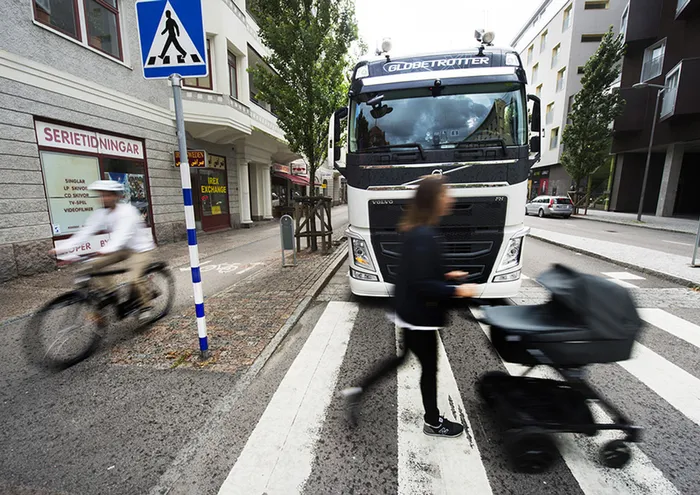'Virtual co-driver' sees all round

New Volvo system integrates input from multiple sensors and cameras for 360-degree warnings of potential hazards. New Volvo system integrates input from multiple sensors and cameras for 360-degree warnings of potential hazards.
Gothenburg, Sweden - Volvo has developed new technology that can reduce the risk of accidents caused by a limited field of vision as it enables a vehicle to do a 360 degree scan of everything in its surroundings.
The vehicle evaluates information from multiple sources simultaneously, functioning much like the human mind does, and suggests actions to avoid any incidents. The technology is now in the test phase and may become reality five to ten years from now.
It's the result of a research project called 'Non-Hit Car and Truck', and enables the vehicle to register and evaluate everything that is happening in its surroundings and suggest actions to avoid accidents, such as collisions with pedestrians, cyclists or other vehicles. If the driver does not respond to the suggested actions, the steering or braking system can then be activated autonomously.
Traffic and product safety director Carl Johan Almqvist said: "Our vision for traffic safety is to have no accidents involving Volvo cars or trucks - and this technology has taken us yet another step towards that; we hope it will save many lives in the future."
VIRTUAL CO-DRIVER
The main component is a data platform that fuses the sensory input from cameras, radars and other sensors positioned on all sides of the vehicle, enabling it to perform a 360-degree scan of its surroundings every 25 milliseconds.
All the data input is interpreted, risk situations are analysed and different route options for the vehicle are generated. By combining several sensory systems, the technology can distinguish and identify different road users including pedestrians, cyclists, motorcyclists and other vehicles since it can sense both their distance and direction.
Systems engineer Mansour Keshavarz said: "The system can predict traffic scenarios up to five seconds ahead, depending on the speed of the objects, and map out the best plan of action.
In many ways it serves as a co-driver - but one that can see all round the vehicle. It can also alert the driver to things that are happening with an alarm signal or braking, for example, so that they can react to avoid a collision."
Market introduction could be within five to 10 years, according to Almqvist.
"We have the main components in place, but we need to do a lot more testing in order to make sure that the system is foolproof. If we manage to solve these challenges, a future without accidents is within reach."
Related Topics: